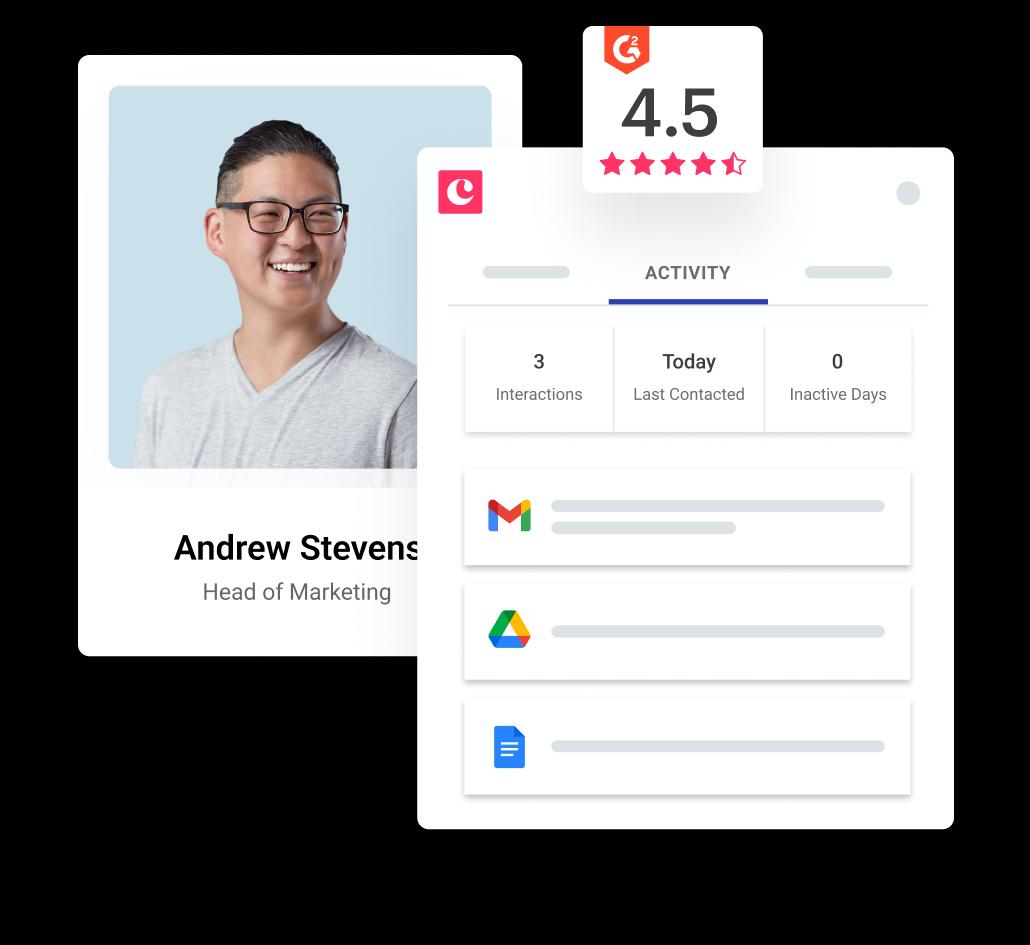
Jess Day
Between 2009 and 2016, Wells Fargo sales reps opened 1.5 million new bank accounts. The problem: None of those 1.5 million account holders had authorized the sales reps to do so.
For years, Wells Fargo sales reps had created fake email addresses and used them to sign up unsuspecting clients to new bank accounts and credit cards. Customers only discovered Wells Fargo’s fraud when they started receiving cards and monthly statements through the mail for accounts they had never heard of.
Why Wells Fargo’s sales reps did so is simple.
Managers set their reps overly demanding sales quotas and tempted them with sizable incentives. When presented with an unattainable goal, the sales reps did anything they could think of to hit their targets. In the end, their actions earned Wells Fargo a $185 million fine and caused untold damage to its reputation—not to mention the harm done to its customers’ credit scores.
Setting unattainable sales quotas won't cause every team to resort to unethical sales tactics. But even in a best case scenario, unattainable quotas will cause disruption to a sales team.
According to SiriusDecisions, quotas are the second most popular reason for a sales rep to leave a company. And considering it takes 21 months for a sales rep to turn a profit, minimizing turnover should be a top priority for any business.
Another risk is the Pygmalion effect, which says that if a sales rep thinks a quota is unattainable, they won’t try to attain it. In other words, when a sales manager sets an ambitious quota to stretch their best performers, they’re often doing the exact opposite.
In this article, we’ll look at three common sales quota mistakes—and how you can use your CRM to fix them.
Problem #1: “My quotas are all based on historical data.”
According to SalesGlobe, the top quota setting challenge is that “sales quotas are driven by historic information that does not represent the opportunity in the market.” This is what’s known as the Rear View Mirror Trap as you ignore the current market conditions and base your decisions solely on what’s behind you.
One popular quota that falls into the Rear View Mirror Trap is Last Month Plus Growth. It looks solely at what a sales rep did previously and asks them to improve by a set percentage. The problem: last month might have different conditions than right now.
If your business is highly seasonal and peaks during November and December, it's unrealistic to expect your sales reps to improve their sales in January when market demand falls off a cliff.
Year-on-year quotas are better as they account for regular seasonal fluctuations but again, they fail to include the economic conditions of right now. For example, a mortgage provider would have experienced very different economic conditions in January 2007 than January 2008.
Basic linear quotas are quick to implement and fine for your first few months in business but after that, you really ought to implement a smarter quota setting system.
Solution: Index your quota using current market demand data.
One way to produce a smarter quota is to introduce current market demand into your calculation with the assistance of your CRM.
For these models, you start with historical data, then adjust it using current economic data to produce quotas that accurately reflect the current market demand.
Let’s look at an example.
Imagine a company called Design Labs. Design Labs sells cloud CAD software to engineering, product design and architectural firms. At the moment, Design Labs has a small dedicated sales team focused on the US market.
Design Labs’ sales manager wants to set sales quotas for their team, so it starts by exporting all the historical sales data from their CRM and uses it to create a performance baseline that they know is achievable. At the moment, this baseline is the same as a linear quota so we need to improve it.
The next step is to index that benchmark based on the current market conditions. While the sales manager could commission an expensive market demand study, the simpler method is to simply check the amount of work in their CRM’s pipeline compared to the original benchmark period.
Here’s a quick example.
In January 2018, each Design Labs’ sales rep had $15,000 in their pipeline and their sales manager had set them a sales quota of $7,500. The next year, the market is a bit stronger and there’s $3,000 more work in each of their pipelines.
Since demand has increased from 2018 to 2019, it doesn’t make sense for the sales manager to insist that their sales reps hit the same sales quota.
Instead, the sales manager should adjust their reps’ sales quotas based on the rising market demand. In this case, the demand is 120% of what it was last year, so you can adjust their sales quota to reflect that. In this case, each sales rep’s January 2019 quota would be $8,370.
Problem #2: “My sales reps all have different circumstances.”
So far we’ve been discussing a “top-down” approach to sales quota setting. Top-down quotas work by taking one financial goal and splitting it equally amongst your sales reps. So if you have a $10,000 monthly goal and five sales reps, you set each rep a quota of $2,000.
Top-down quotas are commonly called Peanut Butter quotas as you take one number and spread it evenly across your entire sales team.
It assumes that all sales reps are equal and ignores factors like the accounts they currently own, the territories they are assigned to and even how talented they are.
Solution: Use granular CRM data to set personalized quotas.
One alternative to top-down quotas is a bottom-up approach, which takes a more granular approach to setting sales quotas. Bottom-up quotas work by analyzing a rep’s (or team’s) historical CRM data—instead of the company's data at large—to work out what they’re capable of and using that to produce an individual sales quota.
While that might sound admin-intensive, a lot of the data you need is already collected by your CRM.
Think about Design Labs again. Let’s say the sales manager brings on a European sales rep to test out the market and assigns them the same $8,370 as the U.S. reps. After a few months, the European sales rep is consistently missing their quota, so the sales manager decides to investigate.
They export the sales rep’s CRM data for the past few months and compares it to the average for the U.S. team:
The CRM data shows that the European sales rep is operating in a very different market to the U.S. reps. Their customers are less willing to spend money and take longer to close.
Considering all that, it just doesn’t make sense to set reps in each market the same sales quota.
Using this data, the sales manager could index the European sales quota based on average deal size. The European sales rep’s average deal size is 30% smaller than the average U.S. deal so reducing their sales quota by 30% to $5,859 produced a more attainable quota.
Problem #3: “My reps feel daunted by volume-based quotas.”
Volume-based sales goals are easy to set and simple to measure. This has led to them becoming the the most common type of sales quota by quite some distance.
In his article, “Small Wins,” organizational theorist Karl Weick argues that people tend to become overwhelmed and unmotivated when faced with large challenges like the $8,370 sales quota set for the Design Labs’ sales reps.
Weick proposes a strategy where you redraw large problems as a series of smaller, tractable challenges. By successfully completing each small challenge, people get to celebrate each “small win” on their way to the ultimate goal, improving both moral and performance.
In a sales environment, however, this requires a radical rethink of quotas.
Solution: Use your CRM to power activity-based sales quotas.
Instead of quantifying quotas using sales volume, more and more companies are using their CRM to implement activity-based quotas. An activity-based quota is based on a sales rep performing a quantifiable activity like sending an email, making a phone call, or booking a meeting.
In the past, activity-based quotas were impractical to implement as it meant sales reps had to keep a granular record of their activity and manually report it to their manager. However, most modern CRMs are already recording activity data like emails, phone calls, meetings, demos and proposals.
Let’s look at how this works in practice.
If our Design Labs’ sales manager wants to implement an activity-based quota, they first need to understand how their sales activity relates to actual sales.
First, they export their sales reps’ activity logs along with their closed sales for the past year. Then they calculate the average number of actions it takes to close a customer. After some analysis, the sales manager works out it takes their sales reps 12 actions to close a sale.
Their next step is to convert their old volume-based quota into an activity-based quota.
Design Labs’ January 2019 sales quota was $8,370 and our first sales rep had an average deal value of $500, so they need to close around 17 deals to hit their target. Since it takes 12 actions to close each sale, the sales rep needs to perform 204 activities per month to hit their $8,370 sales quota.
Suddenly the rep’s $8,370 quota looks a lot more manageable as all they have to do is make 10 phone calls per day.
A good CRM will also help you implement activity-based quotas. For example, to check a sales rep’s activity in Copper, click over to the Activity Report under the Reports tab:
Get an overview of a rep’s activity categorized by type of action.
For an in-depth look, click Activity by Source. This screen categorizes a rep’s activity by source, like emails, calls, and ads.
If you analyze the activity breakdown of your most successful reps, you can even identify the most effective activities. For example, your target market might respond better to phone calls over emails. In that case, you would specify that your reps must make a certain number of phone calls before moving on to emails.
With these insights, you can tweak your activity quota to encourage reps to prioritize high-impact actions and ignore low-impact alternatives.
Set better sales quotas with your CRM.
A bad sales quota probably won’t cause a Wells Fargo-esque scandal in your company. But it will decrease your team’s performance and alienate talented reps—and nobody wants that.
Here’s a recap of how you can use your CRM to set better sales quotas.
- Use real-time demand to index historical performance benchmarks.
- Personalize each rep’s sales quota based on accounts, territories and talent.
- Consider replacing your volume-based quotas with activity-based quotas.
How do you use your CRM to set better sales quotas?









